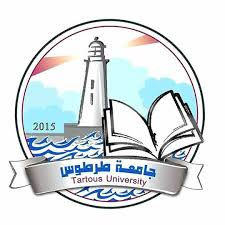Subscribe to the gold package and get unlimited access to Shamra Academy
Register a new userClassical invariants of Legendrian knots in the 3-dimensional torus
326
0
0.0
(
0
)
Ask ChatGPT about the research

No Arabic abstract
All knots in $R^3$ possess Seifert surfaces, and so the classical Thurston-Bennequin and rotation (or Maslov) invariants for Legendrian knots in a contact structure on $R^3$ can be defined. The definitions extend easily to null-homologous knots in any $3$-manifold $M$ endowed with a contact structure $xi$. We generalize the definition of Seifert surfaces and use them to define these invariants for all Legendrian knots, including those that are not null-homologous, in a contact structure on the $3$-torus $T^3$. We show how to compute the Thurston-Bennequin and rotation invariants in a tight oriented contact structure on $T^3$ using projections.
rate research
Read More
We prove the equivalence of the invariants EH(L) and LOSS-(L) for oriented Legendrian knots L in the 3-sphere equipped with the standard contact structure, partially extending a previous result by Stipsicz and Vertesi. In the course of the proof we relate the sutured Floer homology groups associated with a knot complement and knot Floer homology, and define intermediate Legendrian invariants.
In this article, we introduce rack invariants of oriented Legendrian knots in the 3-dimensional Euclidean space endowed with the standard contact structure, which we call Legendrian racks. These invariants form a generalization of the quandle invariants of knots. These rack invariants do not result in a complete invariant, but detect some of the geometric properties such as cusps in a Legendrian knot. In the case of topologically trivial Legendrian knots, we test this family of invariants for its strengths and limitations. We further prove that these invariants form a natural generalization of the quandle invariant, by which we mean that any rack invariant under certain restrictions is equivalent to a Legendrian rack. The axioms of these racks are expressible in first order logic, and were discovered through a series of experiments using an automated theorem prover for first order logic. We also present the results from the experiments on Legendrian unknots involving auto-mated theorem provers, and describe how they led to our current formulation.
We classify the Legendrian torus knots in S^1times S^2 with its standard tight contact structure up to Legendrian isotopy.
We prove that the signature bound for the topological 4-genus of 3-strand torus knots is sharp, using McCoys twisting method. We also show that the bound is off by at most 1 for 4-strand and 6-strand torus knots, and improve the upper bound on the asymptotic ratio between the topological 4-genus and the Seifert genus of torus knots from 2/3 to 14/27.
We recursively determine the homotopy type of the space of any irreducible framed link in the 3-sphere, modulo rotations. This leads us to the homotopy type of the space of any knot in the solid torus, thus answering a question posed by Arnold. We similarly study spaces of unframed links in the 3-sphere, modulo rotations, and spaces of knots in the thickened torus. The subgroup of meridional rotations splits as a direct factor of the fundamental group of the space of any framed link except the unknot. Its generators can be viewed as generalizations of the Gramain loop in the space of long knots. Taking the quotient by certain such rotations relates the spaces we study. All of our results generalize previous work of Hatcher and Budney. We provide many examples and explicitly describe generators of fundamental groups.
Log in to be able to interact and post comments
comments
Fetching comments


Sign in to be able to follow your search criteria


